

WhatThePerf? Colorization. I love to colorize b/w images :) The black and white images used for colorization are found from different sources all over the Internet, and are assumed to be in public domain and are displayed under the fair use principle.
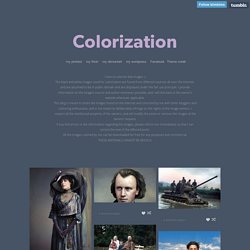
I provide information on the image's source and author whenever possible, and I will link back to the owner's website wherever applicable. This blog is meant to share the images found on the Internet and colorized by me with other bloggers and colouring enthusiasts, and is not meant to deliberately infringe on the rights of the image owners. I respect all the intellectual property of the owners, and will modify the posts or remove the images at the owners' request. If you find errors in the information regarding the images, please inform me immediately so that I can correct the text of the affected posts. Making a Carbon Transfer Print. 100 Year Old Colour Photographs by S. M. Prokudin-Gorskii.
Cámaras telemétricas (I): qué son, ventajas y desventajas. Detrás de una lente: Réflex versus Telemétricas. DX encoding. 135 Film Cartridge with DX barcode (top) and DX CAS code.
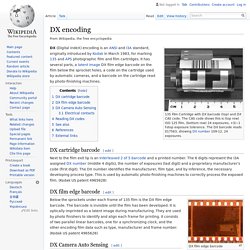
The CAS code shows this is (top row) ISO 125 film, (bottom row) 24 exposures, +3/−1 f-stop exposure tolerance. The DX barcode reads 017563, showing DX number 109-12, 24 exposures. DX (Digital indeX) encoding is an ANSI and I3A standard, originally introduced by Kodak in March 1983, for marking 135 and APS photographic film and film cartridges. It has several parts, a latent image DX film edge barcode on the film below the sprocket holes, a code on the cartridge used by automatic cameras, and a barcode on the cartridge read by photo-finishing machines. Olympus XA. B&W Film Developing Times. Beloved High-Speed Film Camera Faces Extinction.
For more than five decades, the Charles A.
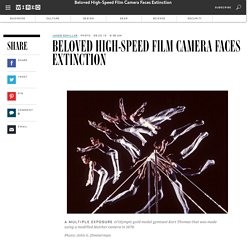
Hulcher Co. filled an important niche in the camera world. Their cameras, which shot up to 100 frames per second, were used to make photos of everything from Space Shuttle launches to Major League Baseball games. But as digital cameras came to dominate, Hulcher saw business decline steeply, and today the company is down to just four employees. “Digital has pretty much killed film cameras,” says Richard Hill, 75, who has been at the Hulcher company since the 1950s. The original model, the Hulcher 70, was built in the early 1950s by Charles Hulcher and could shoot up to 50 frames per second on 70mm film. Hodachrome. The chlorophyll process « Chlorophyll Process. Writer / Tiffany Pereira Photography / Tiffany Pereira and Binh Danh The chlorophyll process is an organic alternative photography process akin to the anthotype process.
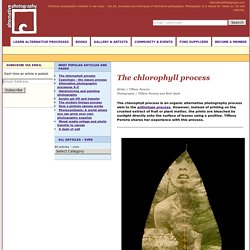
However, instead of printing on the crushed extract of fruit or plant matter, the prints are bleached by sunlight directly onto the surface of leaves using a positive. Tiffany Pereira shares her experience with this process. Binh Danh – Holding #2From the Immortality: The Remnants of the Vietnam and American War seriesChlorophyll print and resin15 5/8 x 13 1/2 inches 2009 Sunlight, Water and Leaves: Using the pigments of the life-giving photosynthesis process to develop images. Dan Carrillo: Daclotype. Deanna templeton captures the perfect pleasure of skinny dipping.
The previous owner of artists Deanna and Ed Templeton's house in Huntington Beach, California was an elderly lady.
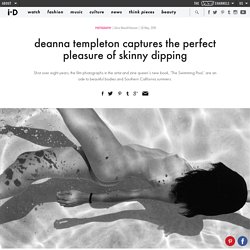
As a result, their swimming pool is just the right size for someone a little over five feet tall to accomplish small laps in. "It's shallow, not that long, and shaped like a peanut," says Deanna. In her new book, The Swimming Pool (due for release through Um Yeah Arts in June), Deanna captures eight summers worth of visiting skinny dippers — friends, and later, friends of friends — suspended in the pool's turquoise water.
100+ Creative Photography Ideas: Techniques, Compositions And Mixed Media Approaches. Students taking high school photography qualifications such as A Level Photography or NCEA Level 3 Photography often search the internet looking for tips, ideas and inspiration.
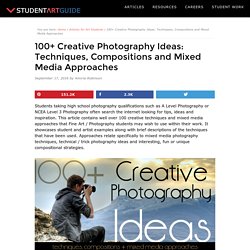
This article contains well over 100 creative techniques and mixed media approaches that Fine Art / Photography students may wish to use within their work. It showcases student and artist examples along with brief descriptions of the techniques that have been used. Approaches relate specifically to mixed media photography techniques, technical / trick photography ideas and interesting, fun or unique compositional strategies.
EL REVELADO. Página 8 LA COPIA FOTOGRÁFICA La copia fotográfica es el resultado final de la proyección del negativo sobre un soporte de papel PAPEL FOTOGRÁFICO Imprescindible para la obtención de la copia, el papel fotográfico que se comercializa en formatos desde 9 x 12 hasta 50 x 60 cm. y en rollo, se compone de una base que da al papel sus características físicas, y de una emulsión ortocromática de baja sensibilidad y contraste variable.
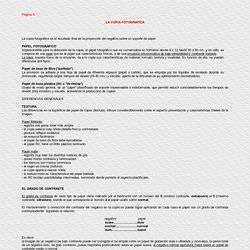
La base, soporte físico de la emulsión, da a la copia sus características de material, formato, textura y tonalidad. PEL NEOPAN ACROS 100 120X5 PACK 120mm B/N. TALLER DE TÉCNICAS FOTOGRÁFICAS: 13.- Latitud de la película. Para medir la LUZ REFLEJADA tengo que decidir donde voy a poner mi gris medio, a que le voy a dar prioridad, si a las altas, medias o bajas luces, esto producto de lo siguiente: si tengo una situación de alto contraste, tengo que decidir si mido en las luces y pierdo las sombras, si mido en las sombras y pierdo las luces o si pierdo ambos extremos al hacer una medición general.
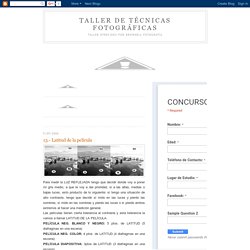
El positivado. Fine Art Wedding Photography. Como cargar chasis a mano y no morir en el intento? Hand Loading Bulk Film 35mm. Revelado fotografico. He de reconocer que cuando empecé a oir hablar sobre la posibilidad de revelar película fotografica con café en los foros, me sonaba más a que a frikada no real que a una posible alternativa a la hora de revelar.
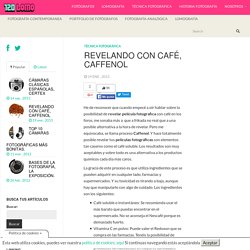
Pero me equivocaba, se llama proceso Caffenol. Y hace totalmente posible revelar tus películas fotográficas con elementos tan caseros como el café soluble. Los resultados son muy aceptables y sobre todo es una alternativa a los productos químicos cada día más caros. La gracia de este proceso es que utiliza ingredientes que se pueden adquirir en cualquier lado, farmacias y supermercados. Y su toxicidad es tirando a baja, aunque hay que manipularlo con algo de cuidado. Café soluble o instantáneo: Se recomienda usar el más barato que puedas encontrar en el supermercado. Como veis, todos son productos que podemos encontrar fácilmente.
Take Double Exposures With a 35mm Film SLR (How To) Polaroid 636 Close-up. Color film was built for white people. Here's what it did to dark skin. EL CINE SÚPER 8 EN MÉXICO. 1970-1989 by FilmotecaUNAM.
How I Built Myself a Large Format 4x5 Monorail View Camera. Using Coloured Filters in Black and White Photography. Black and white filters let you control how colours are converted to shades of grey.
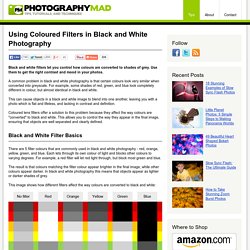
Use them to get the right contrast and mood in your photos. A common problem in black and white photography is that certain colours look very similar when converted into greyscale. For example, some shades of red, green, and blue look completely different in colour, but almost identical in black and white. How Exposure Affects Film. OK, so for a while we’ve been wanting to explain a couple of film technicalities that we’re pretty sure will change many people’s understanding of film and exposure. Alright, take a deep breath ‘cause this stuff is easy but sometimes difficult to explain in written communication. Ultimate Exposure Computer. Imagine an exposure computer so advanced that it uses your eyes as a sensor. The processing unit is as powerful as your brain. The computer is accurate over a light range from reflected starlight through the light produced in a hydrogen fusion reaction.
This computer weighs nothing and operates without batteries. It comes with instructions to allow you to implant the capabilities of the computer directly into your own memory so you can accurately judge a correct exposure by simply looking at the type of light that the subject is in. An Introduction to Shooting Street Photography With Film.